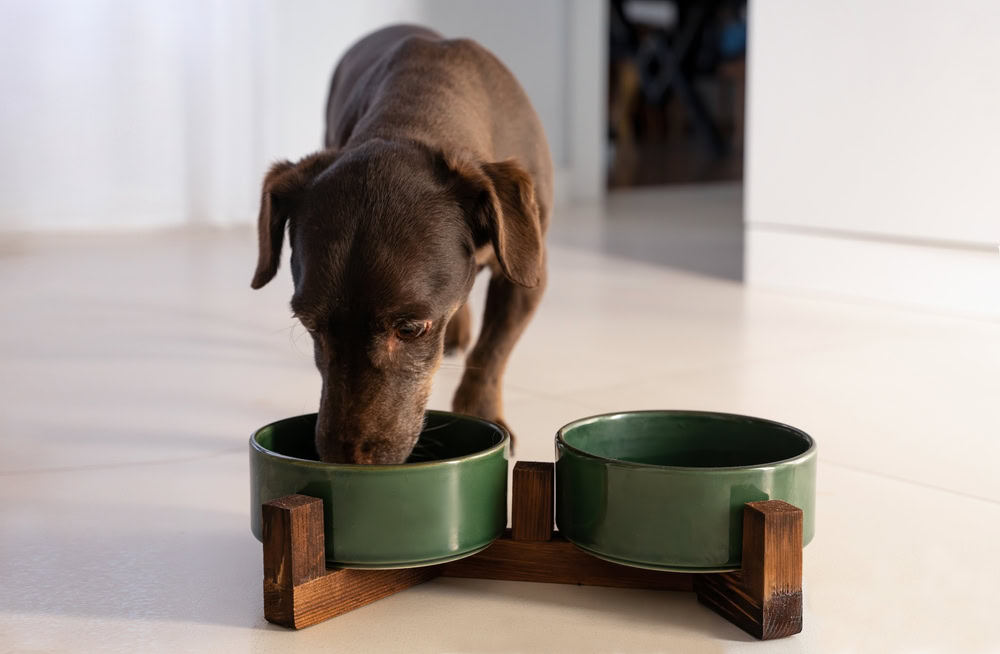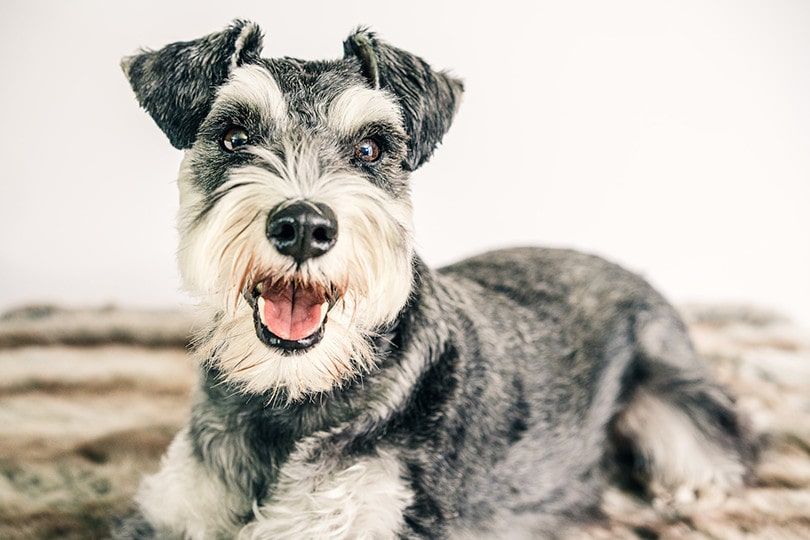Diarrhea is something that every dog owner will have to deal with at least once in the lifetime of their pet. It’s a common issue that can have various causes, some more serious than others. Severe diarrhea or diarrhea accompanied by other signs, such as vomiting, inappetence, or lethargy, should be checked by a veterinarian.
However, if your dog has a minor case of diarrhea or intermittent issues without any other signs, you may be able to simply change what they’re eating for a few days to provide relief.

The 8 Options to Feed a Dog With Diarrhea
Here are various vet-approved options that you can feed your dog with mild diarrhea.
1. Only Water
If your dog is an otherwise healthy adult, withholding food for 24 hours may work wonders. This gives the digestive tract a chance to clear out and heal. Don’t withhold water, however, and don’t withhold food for puppies, seniors, or dogs with other health conditions, as they may not be able to handle a long stretch without sustenance. Speak to your vet before withholding food as a diarrhea treatment to make sure it’s a good idea for your pup.
2. Bone Broth
If your pup is fasting or even if their appetite is simply lacking a bit, bone broth can be a great addition to their meals. It has enough water to help keep your dog hydrated and provides tasty nutrition. Best of all, bone broth is the epitome of digestible foods, so it can relieve your dog’s digestive tract of extra duties while it tries to sort things out. You can serve bone broth as a flavor enhancer in your dog’s water, as a topper to their food, or by itself.

3. Fiber
Fiber is a great regulator of digestion. It works to promote intestinal movement, draw water into the feces, and bulk up a bowel movement. For mild cases of diarrhea, extra fiber may be just what your dog’s digestion system needs to firm up the stools. Fiber can safely be added to your dog’s meals via canned pumpkin (not pumpkin pie filling), flaxseed, green beans, or broccoli (do not add salt, butter, oil, seasonings, etc.). Talk to your vet about what’s best and how much to serve. Canines with long-term issues with diarrhea may do better on a high-fiber dog food.
4. Rice
Plain white rice is not only easily digestible, but it’s also packed with carbohydrates to provide your dog with the energy that they need. Rice is often used as part of a bland diet to transition dogs back to solid foods after a fast or an illness. Just be sure to not add any seasonings or cook it in butter or oils. Rice should only be fed for a few days, as it doesn’t have complete nutrition, and feeding for the long term could leave your dog lacking in certain important nutrients.

5. Lean Protein
Dogs can’t exist on carbohydrates alone, so boiled chicken or lean hamburger is often added to white rice to increase the protein content of a bland diet recipe. It can also help keep your dog feeling full for longer so they’re not constantly begging for a bigger meal while their body tries to recover. Protein is tasty enough to encourage dogs to eat when they may not want to. Just be sure to remove excess fat and cook the meat thoroughly without any additional seasonings.
6. Mashed Potatoes
Potatoes are high-carbohydrate foods that can provide your dog with necessary energy when they’re not feeling up to par. They are also high in fiber and easily digestible, but you must use caution and only serve plain mashed potatoes. Leave out all the tasty add-ins that we enjoy, such as milk, butter, and seasonings; only give your dog plain boiled and mashed pieces. Mashed potatoes can also be mixed with a lean protein like boiled chicken or hamburger as part of a bland meal.

7. Baby Food
Baby food is specifically made to be easily digestible and nutritious for human babies, and the same goes for our furry friends. Serving baby food does come with a caveat, though: You must only use baby foods without any additional seasonings. Opt for the stage II varieties, as these tend to mix a protein with a carbohydrate and veggies for added vitamins. Just be sure it leaves out things like salt, garlic, and onion.
8. Special Digestive Dog Diets
You don’t need to run out and purchase a new bag of dog food for your pet’s occasional diarrhea issue. Instead, special digestive diets are usually reserved for dogs that experience diarrhea on a more regular or long-term basis. These work in a few different ways. Some contain limited ingredients, so they’re less likely to trigger food allergies, others contain increased amounts of fiber, and still others include probiotics and prebiotics to help support a healthy gut.


Causes of Mild Diarrhea in Dogs
Diarrhea can be the result of something directly affecting the digestive tract or even the body as a whole. It can be mild to severe and may occur in conjunction with signs like vomiting, inappetence, and lethargy.
Dogs tend to explore the world with their mouths and may eat things that their stomach wishes that they hadn’t. Diarrhea from eating spoiled food, a sudden change in diet, or too-rich human food will often go away within a day or two and may or may not show up with other signs.
Other causes of diarrhea can be an infection or illness. There are many microbes out there that love to feast in a dog’s digestive system, potentially leading to diarrhea, vomiting, and inappetence. Of course, if these signs are severe or last longer than a couple of days, see your veterinarian. Otherwise, trying these listed food options may work.
Diarrhea can sometimes be the result of stress or anxiety, food allergies, parasites, and other illnesses, so it’s best to have your dog seen by a vet if their diarrhea doesn’t get better within a few days or if things start to get worse.
When to See a Vet for Diarrhea in Dogs
Mild cases of diarrhea may resolve themselves within a few days, especially if your pup is otherwise feeling fine. But there are cases of diarrhea that won’t go down without a fight. This means the stools don’t firm up within 48 hours, and your dog also has vomiting, stomach pain, inappetence, and lethargy. See a vet to help with this issue, as a small dietary change may not take care of it.
If your dog can’t seem to stop having severe diarrhea and/or they are becoming dehydrated, they should see a vet as soon as possible.

Conclusion
Diarrhea is a common issue in our canine companions. Severe cases should be seen by a vet sooner rather than later, but mild cases may respond to withholding food, serving a bland diet, or increasing fiber. Long-term diarrhea may need a more long-term solution, which often includes a dietary change to a digestive formula dog food. Speak to your vet about your dog’s diarrhea so they can recommend the best course of action.
Featured Image Credit: marialevkina, Shutterstock



